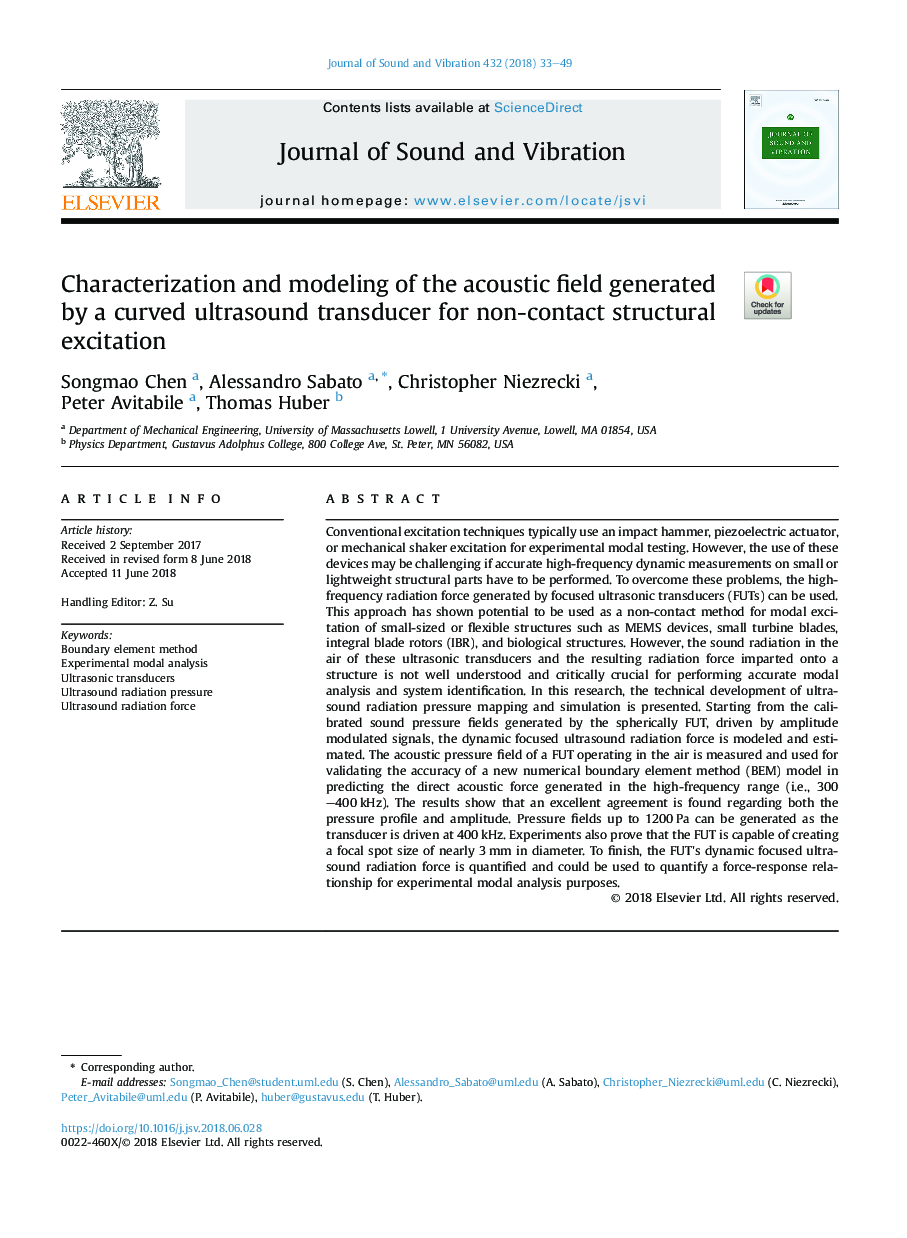| Article ID | Journal | Published Year | Pages | File Type |
|---|---|---|---|---|
| 6752700 | Journal of Sound and Vibration | 2018 | 17 Pages |
Abstract
Conventional excitation techniques typically use an impact hammer, piezoelectric actuator, or mechanical shaker excitation for experimental modal testing. However, the use of these devices may be challenging if accurate high-frequency dynamic measurements on small or lightweight structural parts have to be performed. To overcome these problems, the high-frequency radiation force generated by focused ultrasonic transducers (FUTs) can be used. This approach has shown potential to be used as a non-contact method for modal excitation of small-sized or flexible structures such as MEMS devices, small turbine blades, integral blade rotors (IBR), and biological structures. However, the sound radiation in the air of these ultrasonic transducers and the resulting radiation force imparted onto a structure is not well understood and critically crucial for performing accurate modal analysis and system identification. In this research, the technical development of ultrasound radiation pressure mapping and simulation is presented. Starting from the calibrated sound pressure fields generated by the spherically FUT, driven by amplitude modulated signals, the dynamic focused ultrasound radiation force is modeled and estimated. The acoustic pressure field of a FUT operating in the air is measured and used for validating the accuracy of a new numerical boundary element method (BEM) model in predicting the direct acoustic force generated in the high-frequency range (i.e., 300-400â¯kHz). The results show that an excellent agreement is found regarding both the pressure profile and amplitude. Pressure fields up to 1200â¯Pa can be generated as the transducer is driven at 400â¯kHz. Experiments also prove that the FUT is capable of creating a focal spot size of nearly 3â¯mm in diameter. To finish, the FUT's dynamic focused ultrasound radiation force is quantified and could be used to quantify a force-response relationship for experimental modal analysis purposes.
Keywords
Related Topics
Physical Sciences and Engineering
Engineering
Civil and Structural Engineering
Authors
Songmao Chen, Alessandro Sabato, Christopher Niezrecki, Peter Avitabile, Thomas Huber,
